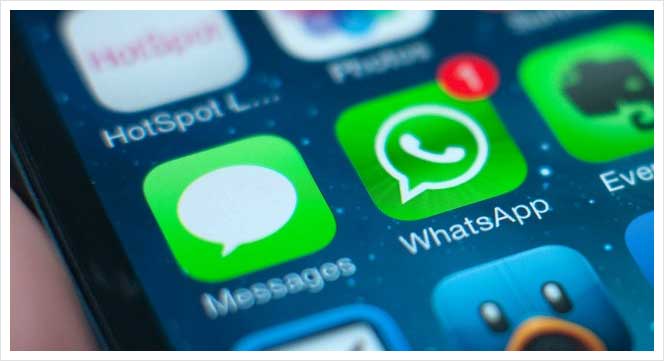WhatsApp is the New Media

THOUSANDS of Kashmiri parents rushed their children to hospitals in the afternoon on January 18—the pulse polio day—after a rumour spread that children who had been administered the pulse polio vaccine were developing complications and some had even died.
Initially authorities failed to assess the serious impact of the rumour but when by evening, thousands of people in the summer capital Srinagar and other major districts were seen outside hospitals with their children, the government stepped in and using Radio, Doordarshan and websites of popular newspapers spread the message that no child had died due to the vaccine.
The repeated announcements through the electronic media— including FM radio—had an impact and people gradually realized that a rumour had created the panic.
In some districts police, used mosque mikes to convey that the polio vaccine has not caused any death. The Medical Superintendent of G.B Pant hospital, the only children’s hospital in Kashmir, said approximately 30,000 people were outside the hospital seeking medical help for their children who had been vaccinated. Such was the impact of the rumour.
Later Jammu and Kashmir Police issued a statement saying that rumour mongers wouldn’t be spared and that they would be dealt with under the provisions of the IT Act. However, till date the police do not seem to have any clear ideas about what had happened and how the rumour about the polio vaccine got spread across Kashmir Valley and why people believed it.
One theory suggests that someone initially used WhatsApp and Facebook to spread the message about the deaths of children due to the polio vaccine, which immediately got disseminated rapidly across Kashmir Valley, creating panic.
The Police issued a statement asking people to dial 100 in case they come across a rumour. “It has been observed that some rumour mongers shared incorrect and false information on social media sites such as Facebook, twitter and WhatsApp etc which created panic in the public. In its efforts to counter the rumours, any false and fabricated information on social networking sites, police have informed the people to call police control room on 100 to get the factual information,” the police statement reads.
WhatsApp and Facebook groups have replaced bulk SMS service providers which were all the rage in Kashmir in 2010. However, after massive protests broke out in Kashmir in 2010 after the killing of several youths by paramilitary CRPF and police, the government blocked around 200 bulk SMS service providers in February that year to stop the flow of news. Later the state government banned the SMS service completely. The ban was subsequently lifted in 2014.
By then WhatsApp had completely replaced the SMS service. All these WhatsApp news service providers disseminate news but there is no accountability for the news. WhatsApp and Facebook are rapidly changing into alternate media with some officials at district level even complaining if their official functions are not being carried by WhatsApp groups. In almost every district of Jammu and Kashmir (except Ladakh region) top officials, journalists and opinion makers are in WhatsApp groups debating and discussing current issues and news. Even the Army and the police have opened WhatsApp groups.
However, despite the wide reach of the WhatsApp service and news dissemination through it, there is no indication that everything is out of the control of the state. The state police keeps an eye on WhatsApp and social networking sites like Facebook and recently a number of youths were picked up and booked under the IT act for anti-State activities. Besides, in times of crises the state home department has the ultimate say. The government snaps internet connections and telephone services with aplomb on the slightest pretexts.
On February, 2013 the government snapped the mobile internet services in Kashmir valley after the hanging of Parliament attack convict Mohammed Afzal Guru inside Tihar jail. All mobile internet connections stopped functioning for days together soon after the news about hanging of Guru broke out.
An impression that media in conflict hit Kashmir region function independently is a myth. The reality is through subtle and opens means the authorities do everything to control media functioning. Even at times government advertisements are stopped to force the newspapers to fall in line.



Leave a Reply